International High Level Military Group paints grim picture of potential conflict between Jewish state, Iran-backed terror group, and what, if anything, can prevent it
A war between Israel and the Iran-backed Hezbollah terrorist group is inevitable, though not necessarily imminent, and will be unavoidably bloody for both sides, according to an assessment by a number of former generals from around the world, known collectively as the High Level Military Group.
In an extensive report, published Wednesday, the organization details both the IDF’s and Hezbollah’s reorganization in the 11 years following the Second Lebanon War, the last time the sides engaged in all-out combat with one another. The High Level Military Group (HLMG) also describes the strategies each side will use in the apparently approaching war, as well as the potential pratfalls of those plans.
“Hezbollah doesn’t want a conflict to break out at present, given it is still seeking to consolidate its gains in Syria and continue preparations in Lebanon. However, its actions and propaganda suggest that it considers its ability to fight a war with Israel as a given,” according to the report.
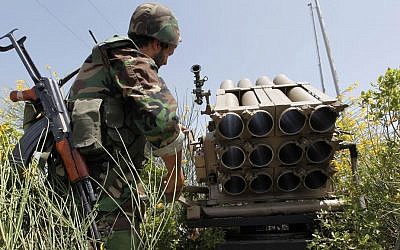
“The timing of such a conflict is likely to be determined by miscalculation as much as decision-making in Iran and Lebanon.”
The group said that should such a war break out, it will likely be “more violent and destructive than the previous ones,” due to the improvements that both sides have made to their respective military capabilities in the interim.
The report, “Hezbollah’s terror army: How to prevent a third Lebanon war,” offers limited recommendations for avoiding such a conflict, instead painting it as a war waiting to happen.
The retired generals and defense officials from the United States, Germany, France, the United Kingdom, Italy, Spain, Colombia, India, and Australia who make up the HLMG also express significant criticism of the United Nations for its “evident severe failure” to fully implement UN Security Council Resolution 1701, which ended the 2006 Second Lebanon War, a dereliction that they credit with exacerbating the situation.
The former military leaders found that the UN Interim Force in Lebanon peacekeeping mission is not enforcing the aspects of Resolution 1701 that are meant to keep armed non-state actors like Hezbollah out of southern Lebanon.
The 76-page report, which is based on interviews solely with Israeli representatives during a fact-finding mission, comes to many of the same conclusions as those of Israeli defense officials. In preparing the assessment, the HLMG did not meet with Lebanese, Hezbollah, or UN officials.
Yet the High Level Military Group maintains that its assessments are “based purely on the accumulated military and strategic experience of its members.”
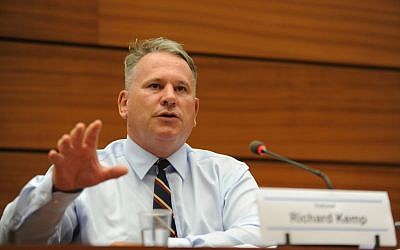
The HLMG, which includes a former chairman of the NATO military committee, a former chief of staff of the Italian army, a former US ambassador-at-large on war crimes, a former director-general of the Indian Defense Intelligence Agency and the outspoken Israel supporter Col. (res.) Richard Kemp of the British military, was created by the Friends of Israel Initiative, a group founded by former Spanish Prime Minister José María Aznar in 2010 to fight an “unprecedented campaign of delegitimization against Israel.”
This is not the group’s first foray into Israeli security. In December 2015, the organization also released a report that defended the IDF’s actions during the previous year’s Gaza war, finding that the army had abided by the rules of armed conflict and even surpassed them.
Hezbollah is all grown up
Hezbollah was founded in 1985, three years after the start of the First Lebanon War. It was created with Iranian support, and began killing Israeli soldiers stationed in IDF outposts in southern Lebanon with anti-tank missiles, improvised explosive devices, and small arms fire.
Over time, however, the group grew from a terrorist nuisance to a full-scale nemesis with significant sway in domestic Lebanese politics. What was once a two-bit terrorist group now represents the benchmark by which the IDF measures its preparedness.
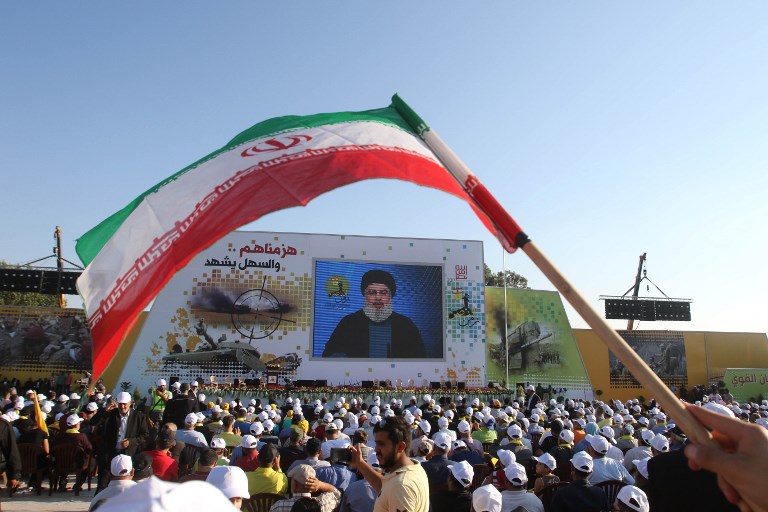
In its report, the former generals and defense officials describe Hezbollah as being “widely considered to be the most powerful non-state armed actor in the world.”
As the Lebanese terrorist group has taken part in the fighting on behalf of Syrian dictator Bashar Assad, it has gotten stronger through combat experience and improved access to advanced weaponry from its benefactor, Iran.
“Hezbollah has the political clout of a government, the firepower of an army and the strategic approach of a terrorist organization,” according to the report.
Israel believes that Hezbollah maintains a force of approximately 25,000 full-time fighters — 5,000 of which underwent advanced training in Iran — with another at least 20,000 fighters in reserve units.

The terrorist army boasts of possessing attack drones, air defense systems, armored personnel carriers and even tanks. It is also believed to have the Yakhont shore-to-sea missile, with which it can threaten Israeli Navy ships.
But its weapons of choice are missiles and rockets, which it has been amassing and improving, with Iranian assistance, at a fantastic rate.
Hezbollah is believed to possess between 100,000 and 150,000 projectiles, most of them short range. Israeli officials assess that in a future war, the terrorist group would be able to sustain a firing rate of over 1,000 missiles per day.
Increasingly, the IDF believes, the group has been focusing on making its missiles more precise so that it can direct attacks to key Israeli strategic sites.
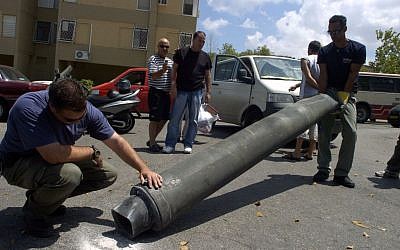
“Thus, not only has the sheer numeric scale of the threat increased exponentially, but the lethality is greatly increased on account of larger payloads, range and higher targeting accuracy,” the HLMG wrote in its report.
Israel has been working to counter that threat through advanced missile defense systems like the Iron Dome, David’s Sling, Patriot and Arrow. But military officials regularly stress that these batteries will not provide perfect, hermetic protection.
On the defensive side, Hezbollah has been embedding itself in the southern Lebanese civilian population “for tactical advantage (making the IDF hesitate to attack) and strategic advantage (using images of civilian harm to delegitimize the IDF),” according to the report.
The HLMG said that Hezbollah “transformed almost every Shiite village in the country’s south into a military asset.”
Inside and under those villages, Hezbollah is believed to have prepared extensive fighting positions from which it could confront the more powerful IDF.
Hezbollah’s leader Hassan Nasrallah has also threatened that the terrorist group would not be fighting alone, but would have the support of Iran-backed militias in Syria and other fighters from across the Middle East. This which would force the Israeli army to fight on two fronts or even more, if Hamas in Gaza joins in the conflict as well.
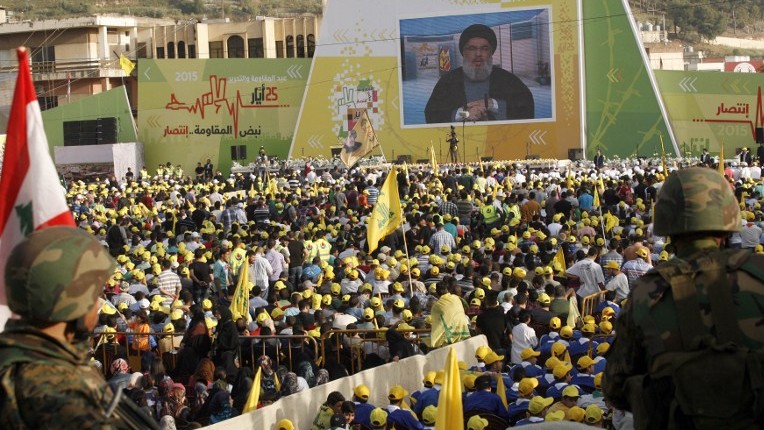
But the terrorist group has another advantage: the Israeli citizenry is unaccustomed to and unprepared for sustained conflict.

“Policymakers expressed concerns about how prepared the Israeli public is for the level of devastation that would be wrought in a major military clash with Hezbollah,” the HLMG wrote.
“Younger Israelis are less familiar with the threat of direct attack than older generations, and Israel’s success in neutralizing less sophisticated rockets fired from Gaza may have led to inflated expectations of its capacity to intercept the volume of rockets likely to be fired by Hezbollah.”
The IDF’s nothing to scoff at either
While Hezbollah’s arsenal contains “more rockets than many European armies,” according to the HLMG report, Israel’s military is considered by many analysts to be the most powerful in the Middle East.
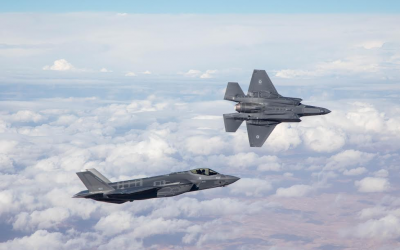
“Israel is equipped with the most advanced fighter jets, high-tech armed drones, and is widely assumed to be a nuclear weapons power,” the retired generals and defense officials wrote.
“Statistical data available for 2014 suggests that the IDF has 410,500 active frontline personnel, 3,657 tanks, and 989 aircraft.”
Israel has also dramatically improved its intelligence on the terrorist group in the 11 years since the Second Lebanon War, an important development, as a severe shortage of accurate information has been blamed for causing many of the conflict’s failures.
By combining the overwhelming military force at its disposal and the intelligence required to direct it, the IDF would seek to end a future war quickly, before the Israeli home front would sustain heavy casualties.
“However, as a potential conflict progresses, it will become harder for Israel’s military superiority to translate into battlefield victory,” according to the HLMG.
In their report, the former generals wrote that Israeli officials told them they expect there to be “thousands of casualties in Lebanon, many of whom will be civilians despite the IDF adhering to the highest standards of the Law of Armed Conflict.”
Conspicuously, while the High Level Military Group provides a general estimate of Lebanese casualties, it offers no such assessment of Israeli civilian deaths, beyond saying that the number is “likely to far exceed previous conflicts.” (There were 50 Israeli civilian deaths in the 1982 Lebanon War, and 46 in the 2006 conflict.)
Hezbollah is Lebanon, or is it?
One of the lingering questions in the High Level Military Group’s report is how Israel perceives the country of Lebanon, if it is fundamentally intertwined with Hezbollah or distinct from it.
“During the HLMG fact-finding, it was clear that an intense policy debate in Israel’s upper echelons increasingly sees some senior voices making the case that a conflict should probably be conceived as including the state of Lebanon as an adversary,” the former generals wrote.
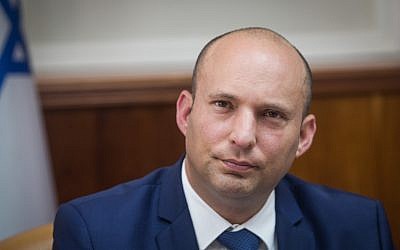
For instance, Education Minister Naftali Bennett has been leading the charge that the two cannot be separated and that Lebanese national infrastructure should also be counted as a legitimate military target in a future war.
This was not the case in the 2006 Lebanon War, when the IDF’s policy was to differentiate between Lebanon and Hezbollah, but developments inside the Arab country could change that.
In its report, the HLMG noted an “increasingly symbiotic relationship between Hezbollah and the Lebanese Armed Forces,” which is believed to include intelligence sharing, as well as material cooperation.
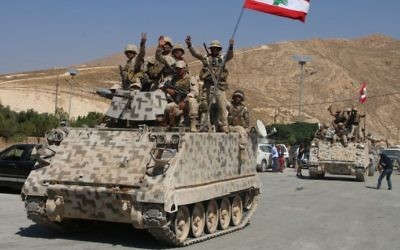
“Israel shared evidence with the HLMG that suggests that at least some military equipment which the LAF receives from international patrons, including the United States, ultimately finds its way into the hands of Hezbollah units,” the retired generals wrote.
However, some analysts, who are not cited in the HLMG document, make the case, against the view of Bennett and other Israeli officials that Lebanon is Hezbollah, and Hezbollah is Lebanon.
One of these is David Daoud, a researcher analyst for the United Against a Nuclear Iran think tank and advocacy group, who argues that by attacking Lebanese national infrastructure, Israel could end up helping Hezbollah by proving to the Lebanese population that the terrorist group is, as it claims, the country’s defender against the “Zionist regime.”
Peacekeepers with their hands tied behind their back
The HLMG puts significant focus on the role and failures of UNIFIL, the United Nations peacekeeping mission in southern Lebanon.
The international force is generally seen by Israel to be feckless and incapable, or at least unwilling, to take serious action against Hezbollah’s force build-up, while in Lebanon the group is perceived by many as being a shill for the IDF.

UNIFIL’s activities in southern Lebanon are dictated by UN Security Council Resolution 1701, which, among other things, calls for no non-state armed forces to occupy positions south of Lebanon’s Litani River.
According to the HLMG, the United Nations force understands Resolution 1701 “in a very narrow sense with regards to the authority to search for weapons in Lebanon and curtail the activity of armed groups.”
A new and improved mandate is required to address the situation
Israel, and now the HLMG, argue that this mandate should be interpreted more broadly, which would allow UNIFIL to curb Hezbollah’s efforts to prepare for war by actively preventing the terror group from possessing weapons south of the Litani, with force if necessary.
“A new and improved mandate is required to address the situation,” according to the report.
What else can be done?
Beyond granting UNIFIL broader powers, the High Level Military Group offers scant advice for preventing a future conflict between Hezbollah and Israel.
What advice is offered is relatively vague, with no specifics to implement or mention of its feasibility. The main recommendation is to address not Hezbollah, but its patron.
“The international community must take actions to curtail Iran’s activities, raise the cost of its behavior and engage in efforts at deterrence,” the group wrote.
In terms of Hezbollah specifically, the High Level Military Group calls for Western nations to cease distinguishing the terror group’s political and terrorist wings.
The international community must take actions to curtail Iran’s activities
The former generals and defense officials also encourage the United States to make any future aid arrangements with Lebanon contingent “on a plan to strip Hezbollah of its de facto status as the leading force in the country.”
More generally, the HLMG calls for the West to “strongly support Israel in its efforts to de-escalate the tensions.”



Leave a Reply
You must be logged in to post a comment.